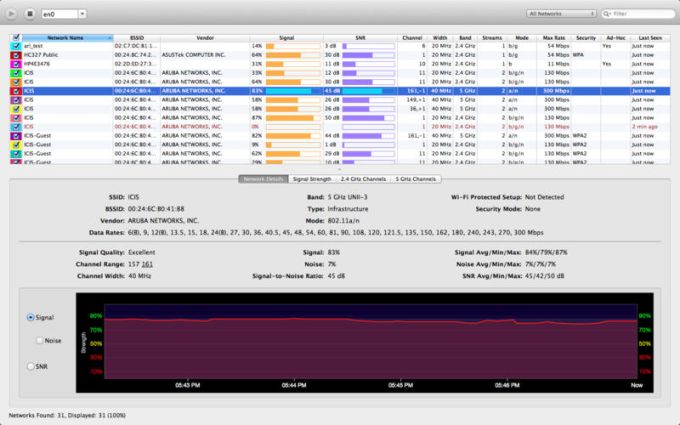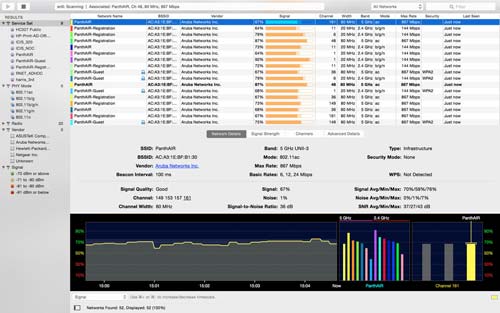
- Wifi explorer not showing all networks install#
- Wifi explorer not showing all networks driver#
- Wifi explorer not showing all networks Pc#
Wifi explorer not showing all networks install#
Windows will automatically install the latest driver. If the previous steps didn’t work, try to uninstall the network adapter driver, and then restart your computer.
Wifi explorer not showing all networks driver#
Uninstall the network adapter driver and restart Type ipconfig /flushdns and select Enter. Type netsh int ip reset and select Enter. Type netsh winsock reset and select Enter. Try running these network commands to manually reset the TCP/IP stack, release and renew the IP address, and flush and reset the DNS client resolver cache:Īt the command prompt, run the following commands in the listed order, and then check to see if that fixes your connection problem: Make sure you've installed the latest firmware and see the documentation for your router. If you can connect to the internet using an Ethernet cable, it confirms the connection problem is due to the Wi-Fi router.
Wifi explorer not showing all networks Pc#
If the results of the ping test indicate that you are not getting a reply from the router, try connecting your PC directly to your modem by using an Ethernet cable (if you can). Contact your ISP or check online on another device (if you can) to see if there's a service outage. If you see results like this and are getting a reply, then you have a connection to your Wi-Fi router, so there might be a problem with your modem or ISP. Ping statistics for 192.168.1.1: Packets: Sent = 4, Received = 4, Lost = 0 (0% loss), Approximate round trip times in milli-seconds: Minimum = 4ms, Maximum = 5ms, Average = 4ms The results should be something like this: For example, type ping 192.168.1.1 and select Enter. For example: 192.168.1.1Īt the prompt, type ping and then select Enter. To the right of it, select Run as administrator > Yes.Īt the command prompt, type ipconfig, and then select Enter. Look for the name of your Wi-Fi network within the results, and then find the IP address listed next to Default gateway for that Wi-Fi network. Select Search on the taskbar, and type command prompt. If you can't connect to the network on any device, continue to the next step.Ĭheck to see if there is a problem with the connection to your Wi-Fi router. Do this by using a ping test. If you can connect, the source of the problem is likely due to your device-go to the section Network troubleshooting on your device. On another laptop or phone, try to connect to the same network.


If you can't connect to another website, go to the next step. If the website opens, there might be a problem with the specific website.

If the "Wi-Fi connected" icon appears on the right side of the taskbar, visit a different website. Try the following steps to help narrow down the source of the problem. The steps you take to restart your modem and router can vary, but here are the general steps.Ĭonnection problems can be due to a variety of reasons-problems with the website, your device, the Wi-Fi router, modem, or your Internet Service Provider (ISP). When you do this, everyone that is connected to your Wi-Fi network will be temporarily disconnected. This helps create a new connection to your internet service provider (ISP). Under Most frequent, select Network & Internet > Run, or select the button below to launch the Network & Internet Get Help feature.įollow the steps in the troubleshooter and see if that fixes the problem. Select Start > Settings > System > Troubleshoot > Other troubleshooters.

The Network troubleshooter can help diagnose and fix common connection problems. (An indicator light usually shows when it's on.) Make sure the physical Wi‑Fi switch on your laptop is turned on. To learn more about the differences between 2.4 GHz networks and 5 GHz networks, check out Wi-Fi problems and your home layout. If your list of available Wi-Fi networks includes both a 2.4 GHz network and a 5 GHz network, try connecting to the other network. These will appear as separate networks in the list of available Wi-Fi networks. Many consumer Wi-Fi routers broadcast at two different network frequency bands: 2.4 GHz and 5 GHz. Try connecting to a network on a different frequency band. If it says Connected underneath the network name, select Disconnect, wait a moment, and then select Connect again. If it does, select the Wi-Fi network, and they try to connect to it. Select Manage Wi-Fi connections ( >) on the Wi-Fi quick setting, see if a Wi-Fi network you recognize and trust appears in the list of networks. Also, make sure Airplane mode is turned off. Select the "No internet connection" icon on the right side of the taskbar, and make sure Wi-Fi is turned on. Try these things first to help you fix or narrow down the connection problem.


 0 kommentar(er)
0 kommentar(er)
